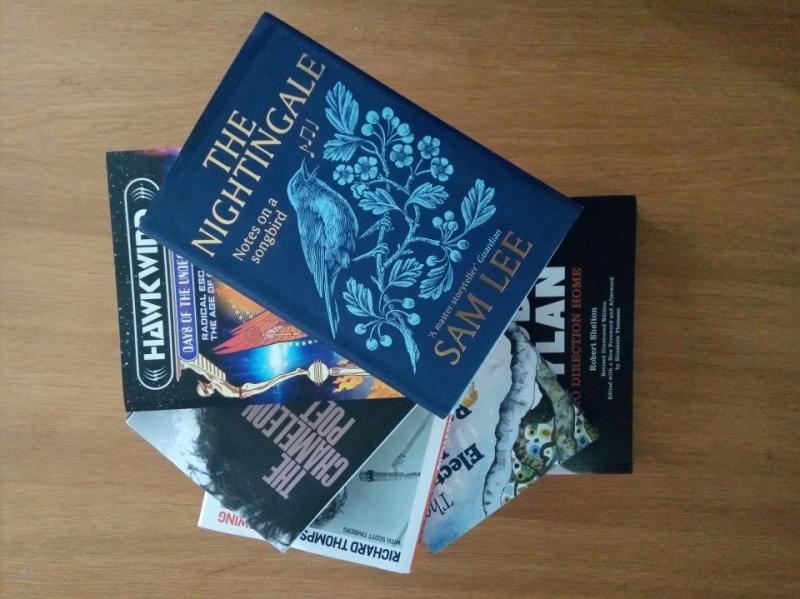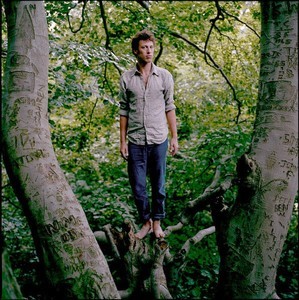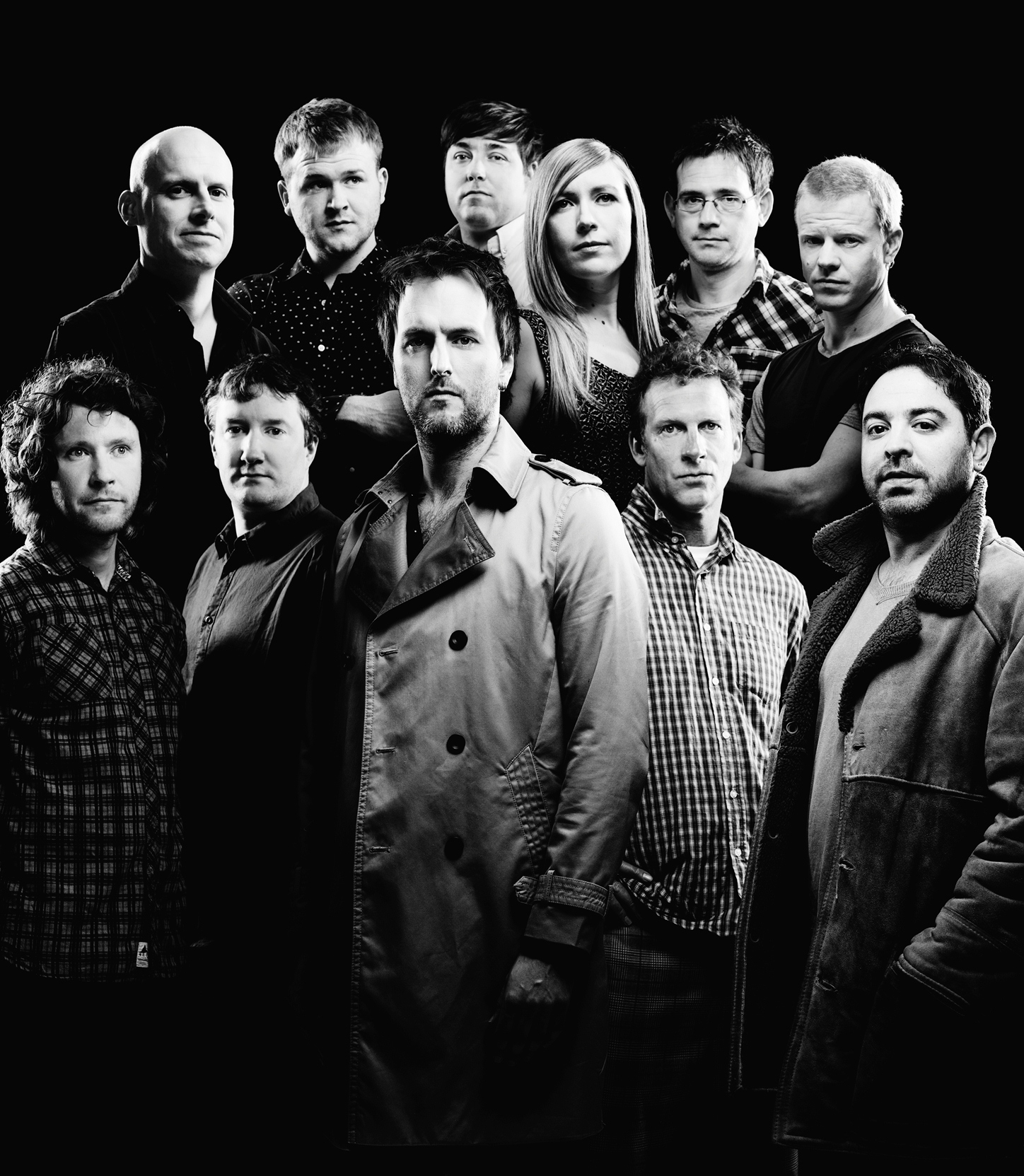Music books to end lockdown: Sam Lee, Hawkwind, Dylan, Richard Thompson, and the Electric Muses | reviews, news & interviews
Music books to end lockdown: Sam Lee, Hawkwind, Dylan, Richard Thompson, and the Electric Muses
Music books to end lockdown: Sam Lee, Hawkwind, Dylan, Richard Thompson, and the Electric Muses
From nightingale song to sonic attack via folk rock and the world's greatest songwriter, spring 2021's best music books

It won’t be long now before concert halls and back rooms, arts centres and festival grounds fill with people again, and live music, undistanced, unmasked, and in your face, comes back to us.
First up is Sam Lee’s Nightingale, a beautifully made hardback, packed with illustrations, facts, stories, lore, and more. While the focus here is avian song and the projective wonders of the syrinx, there’s plenty of human interaction to explore, too, with Lee taking us into his night-time world of song with nightingales in various woodlands in the south east of England throughout April and May, when nightingales return from West Africa and the males start singing for a mate. He’ll have had to wrap up a bit through 2021’s Baltic April, but he’s a naturalist as well as a singer, and a voluble, insightful, often ecstatic and always knowledgeable guide into the "otherworld" of nightingale song, rare as it is, and rarer as it is becoming.
He’s a naturalist as well as a singer, and a voluble, insightful, often ecstatic and always knowledgeable guide into the ‘otherworld’ of nightingale song
The book is full of facts, but fuller with story. Lee recounts his first encounter with nightingale song and tells the story of cellist Beatrice Harrison’s musical duet with nightingales recorded for the BBC in 1924 – a duet Lee resurrected in 2014, for its 90th anniversary. Readers get insights into how to find nightingales, how their song, migrations and mythology are wrapped up with the arrival of spring, and how their mythology and folklore spread worldwide, with an exploration of the human songs, poetry and music inspired by the bird, from British folk balladry to the poetry of Keats, Coleridge, Clare, as well as the song traditions of Europe, Africa, Asia and the Americas.
You’ll find out where and when to seek out nightingales, discover – or at least reflect on – the source of its song in the syrinx, along with vivid evocations of what hearing that song is like. There’s a strong focus on the nightingale’s endangerment, too, with the perilous loss of habitats threatening its survival. Just as Lee spent many years collecting songs from the "last generation" of Romany and Traveller singers to carry the British ballad tradition – the crown jewels of our folk culture – he is now focused on highlighting and preserving the habitats and song of the sweet nightingale, organising the XR action to "bring back" the nightingale’s song to Berkeley Square, and how we can all play a part in finding ways to create an alternative to the age of extinction.

Setting the mighty space rockers Hawkwind next to Sam Lee and his nightingales may seem a strange pairing – classic 1970s Hawkwind evoked urban dystopias, shrouded in a relentless, churning space rock that billowed like diesel pumping from an unfiltered exhaust – but the band was an early adopter when it came to highlighting society’s degradation of ecology and the environment. The ultimate "people’s band" coalesced like a hallucinogenic mould in the squats of Ladbroke Grove’s counter culture, and Joe Banks’ epic survey of their lives and music from August 1969 when they crashed a gig at All Saints Hall through to the end of the 1970s, when Ginger Baker took his place behind the drum stool, is among the best of Hawkwind tomes.
The ultimate ‘people’s band’ coalesced like a hallucinogenic mould in the squats of Ladbroke Grove’s counter culture, and Joe Banks’ epic survey is among the best of Hawkwind tomes
Banks’ Hawkwind: Days of the Underground features new interviews with much of the crew (DikMik, Turner, Stacia, manager Doug Smith and writer Michael Moorcock among them), although Dave Brock, who continues to lead a Hawkwind line-up, is absent from the roll call. Banks sees them, correctly, as true counter-cultural revolutionaries and pioneers in terms of opposing the mainstream musical and political cultures of the 1970s, reflecting the paranoias of a pretty dystopian decade, and absorbing environmentalism the way blotting paper absorbs LSD, spreading the word and bringing the values of the counter culture to the provinces other bands could not reach. Hell, they even played Belfast at the height of the Troubles. All power to the Hawks. They were into the Velvets, Can and Krautrock long before it was fashionable, and their legacy gave us punk rock and dance music. Throughout, Banks is lucid, hugely knowledgeable, incisive, passionate and engaged, telling the story album by album, tour by tour, break-up by break-up (only The Fall can have had as many band members pass through its revolving doors). He is also clearly a footnote addict – there are pages and pages of them, like a shadow book within a book, and full of fascinating minutiae. (I’ve since heard there is now a website with further footnotes.) Knock yourself out on Days of the Underground.com.

I don’t believe Bob Dylan ever covered a Hawkwind song – though I can imagine him doing a mean version of “Masters of the Universe”, with added nasal howl – but he was, of course, one of the kings of the underground, and the Sixties counterculture, and what with it being his 80th birthday any minute, there’s a tranche of books coming out, not to bury but to praise. Biggest, and the best in terms of its design and illustrations and closeness of its author to its subject, is Elizabeth Thomson’s fine editing job on the classic Robert Shelton bio, No Direction Home, here published as a coffee table slab packed with fantastic photos and ephemera – posters, tickets, all that.
Route Publishing, which has given us Clinton Heylin’s excellent specialist tomes on Dylan’s gospel phase and the making of Blood on the Tracks, is also behind the extremely belated publication of the late John Bauldie’s The Chameleon Poet, a literary and Jungian take on all things Bob – or specifically, on the poetry in his work (at least up to 1979, and his conversion to Christianity). It comes with a generous quote from Heylin on its cover – a rarity in Dylan studies, I’m told – and sees Dylan’s development as a poet-man-singer as a unified journey towards self-awareness, and the individuation that Jung describes extensively in his work. Bauldie draws a great deal on Shakespeare – especially Lear – as well as Jung, and charts Dylan’s "search for self" via key songs – from “Talking World War 3 Blues” all the way down to “Changing of the Guards”, a brilliant song from underrated album Street Legal that’s drenched in Jungian mythological concepts.
The Chameleon Poet sees Dylan’s development as a poet-man-singer as a unified journey towards self awareness, and the individuation that Jung describes
Route will also soon publish the occasional writings of Dylan scholar Michael Gray. Outtakes on Bob Dylan draws on five decades of writing, and includes an in-depth look at Rough and Rowdy Ways, the 2020 masterpiece that was my own Album of the Decade for theartsdesk.
Dylan likes motorbikes, and once covered Richard Thompson’s “1952 Vincent Black Lightning” at a festival they were both billed to play – without telling Thompson in advance, and much to the latter’s astonishment. As a lyricist, Thompson is one of the few who can rival Dylan for deep impact, and his much-awaited Memoir, Beeswing, opens with a fantastic image of dust as memory that would fit perfectly in Dylan’s own image-drenched, if actuality-lite Chronicles. The first two pages, a kind of evocation of memory itself (a muse to whom Dylan sings in Rough and Rowdy Ways), contains the book's most arresting writing, but that’s not to say the rest of it is below par. Far from it, but it does take a more prosaic, chronological route through Thompson’s adventures in music from his schooldays – The Stranglers’ Hugh Cornwell was a fellow pupil and early bandmate – through Fairport, the extended Fairport family, and, in the final 50 or so pages, his work with Linda Thompson.
As a lyricist, Thompson is one of the few who can rival Dylan for deep impact
The evocation of those formative years is enjoyable and absorbing. The long-lasting trauma that followed the road accident at the end of the M1 that killed his then-girlfriend and the Fairport drummer Martin Limble is acutely observed, and follows through to the conception, gestation and release of Liege and Lief and the invention of English folk rock that would send waves across many oceans – young players from all over the world decided that they too should look into their own backyard for inspiration. It’s essential reading for Fairport or Thompson fans, and while there’s little on the cultish Sufi community he took his wife and kids off to (which curtailed his music-making for a few years), but he does give a vivid account of his own haj to Mecca, ending with a splash-about in the Red Sea as the bloated corpse of a camel and then a sheep float by.
Denselow’s journalistic chronicle of folk rock’s sometimes labyrinthine twists and turns is crisply and succinctly told
Thompson’s memoirs come to a close in 1975, which is, coincidentally, when veteran broadcaster and journalist Robin Denselow first published his account of the story of English folk rock, The Electric Muse, with Robert Shelton, Karl Dallas and Dave Laing. It’s now being reissued as The Electric Muse Revisited, with new chapters by Denselow – the only one still in the land of the living – which traces the British folk rock story from the mid-1970s through to the present, updating the song journeys of the original movers and shakers – Fairport, Steelye, Albion Band, the Thompsons – with the folk stars of later generations – the likes of Oysterband, The Pogues, Bellowhead (pictured), Eliza McCarthy, Jim Moray and Sam Lee playing their distinctive parts in playing out the tradition through contemporary British culture.
Shelton and Laing’s original accounts of the American scene, and the journey from coffee houses to Woodstock, is fascinating, while Karl Dallas’s approach to the tradition via Marxist history will find contemporary resonance in the resurgence of Marxist ideas (and the unpopularity of capitalist realities). I love his mythological take on the origins and ongoing life of the folk tradition – a construct that seems to retreat the closer you get to it – and the Apollonian versus the Dionysian drives that run like two threads twining in and out of that folk culture of origin and revival. Denselow’s journalistic chronicle of folk rock’s sometimes labyrinthine twists and turns is crisply and succinctly told, with plenty of new interviews to illuminate the chronology. He has also curated a fascinating 4-disc set, stuffed with rarities as well as some exclusive new recordings from the likes of Eliza Carthy, Imagined Village and Justin Adams, and provides an exhaustive and varied account of the electric muse in action across 50 years.
- The Nightingale: Notes on a Songbird, by Sam Lee (Century, £14.99)
- Hawkwind: Days of the Underground, by Joe Banks (Strange Attractor, £22)
- The Chameleon Poet: Bob Dylan's Search for Self, by John Bauldie (Route Publishing, £20)
- Bob Dylan: No Direction Home, by Robert Sheldon, Ed: Elizabeth Thomson, Palazzo, £30)
- Beeswing, by Richard Thompson (Faber, £20)
- The Electric Muse Revisited, by Robert Shelton, Dave Laing, Karl Dallas & Robin Denselow (Omnibus Press, £18.99)
- Tim Cumming's website
Watch Tim Cumming's Hawkwind: Do Not Panic documentary for the BBC
Explore topics
Share this article
The future of Arts Journalism
You can stop theartsdesk.com closing!
We urgently need financing to survive. Our fundraising drive has thus far raised £49,000 but we need to reach £100,000 or we will be forced to close. Please contribute here: https://gofund.me/c3f6033d
And if you can forward this information to anyone who might assist, we’d be grateful.

Subscribe to theartsdesk.com
Thank you for continuing to read our work on theartsdesk.com. For unlimited access to every article in its entirety, including our archive of more than 15,000 pieces, we're asking for £5 per month or £40 per year. We feel it's a very good deal, and hope you do too.
To take a subscription now simply click here.
And if you're looking for that extra gift for a friend or family member, why not treat them to a theartsdesk.com gift subscription?

Add comment